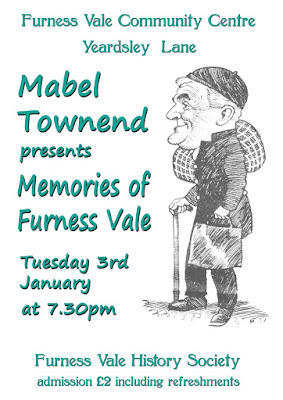The continuing story of the house Joe and Mary Ann Scott lived in for over 50 years and the families that have lived here since.*
Now it seems odd today that for almost two thirds of the life of our house the only language that would have reverberated through the rooms would have been English.
Of course I might be wrong but I doubt it.
The first “foreign language” would have been French and it will have been occasioned by the visit of three from France in the mid 1970s.
They were friends of John, Lois and Mike, who bought the house on the death of Mary Ann in 1973.
In all I think the French friends visited three times and that was pretty much that until Tina’s family began visiting.
They are originally from Naples but now live north of Milan and this Christmas we had five of them over which was a bit of a squeeze given that all the lads were back as well.
And now we have another of Tina’s brothers here for New Year.
He flies in tomorrow and will be here for a few days.
We had hoped for Saul’s partner who was due to fly in from Warsaw on Boxing Day but sadly work got in the way.
But she has been here before and so we can count Polish along with Italian and French which may not count as much of a babble of foreign voices but it is a start.
Now there is really nothing unusual all of this, we have become a more cosmopolitan and multi cultural country and despite the few who feel challenged or upset at this I have to say I welcome it.
More so because my maternal grandmother was German, my dad’s family were from the East Highlands and I count as friends people from across the countries of the EU, as well as Canada, Australia, New Zealand and Africa.
Added to which we have family in Poland Canada and Australia.
Of course Joe and Mary Ann’s generation would also have had relatives who visited or settled abroad and will have known families who could recount similar experiences stretching back into the 19th century.
And on a more parochial level Joes’ parents were from London and moved north in the late 1870s moving in to Chorlton where they were settled by 1881.
John and Mike were from Leeds, Lois from Cambridge and me from south east London.
Moreover the house has also entertained a shed load of people who while they may all speak English were born all over the UK and passed through with their own stories and experiences.
Location; Chorlton
Pictures; a little bit of France in Chorlton, circa 1976, courtesy of Lois Elsden and a big bit of Italy, 2014 from the collection of Andrew Simpson
*The story of house,
http://chorltonhistory.blogspot.co.uk/search/label/The%20story%20of%20a%20house
 |
| A little bit of France in Chorlton, circa 1976 |
Of course I might be wrong but I doubt it.
The first “foreign language” would have been French and it will have been occasioned by the visit of three from France in the mid 1970s.
They were friends of John, Lois and Mike, who bought the house on the death of Mary Ann in 1973.
In all I think the French friends visited three times and that was pretty much that until Tina’s family began visiting.
They are originally from Naples but now live north of Milan and this Christmas we had five of them over which was a bit of a squeeze given that all the lads were back as well.
And now we have another of Tina’s brothers here for New Year.
He flies in tomorrow and will be here for a few days.
We had hoped for Saul’s partner who was due to fly in from Warsaw on Boxing Day but sadly work got in the way.
 |
| A big bit of Italy, 2013 |
Now there is really nothing unusual all of this, we have become a more cosmopolitan and multi cultural country and despite the few who feel challenged or upset at this I have to say I welcome it.
More so because my maternal grandmother was German, my dad’s family were from the East Highlands and I count as friends people from across the countries of the EU, as well as Canada, Australia, New Zealand and Africa.
Added to which we have family in Poland Canada and Australia.
 |
| And more of Italy, 2009 |
And on a more parochial level Joes’ parents were from London and moved north in the late 1870s moving in to Chorlton where they were settled by 1881.
John and Mike were from Leeds, Lois from Cambridge and me from south east London.
Moreover the house has also entertained a shed load of people who while they may all speak English were born all over the UK and passed through with their own stories and experiences.
Location; Chorlton
Pictures; a little bit of France in Chorlton, circa 1976, courtesy of Lois Elsden and a big bit of Italy, 2014 from the collection of Andrew Simpson
*The story of house,
http://chorltonhistory.blogspot.co.uk/search/label/The%20story%20of%20a%20house














































